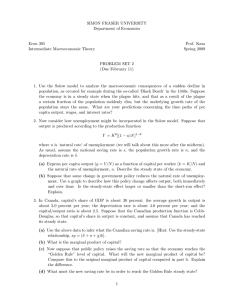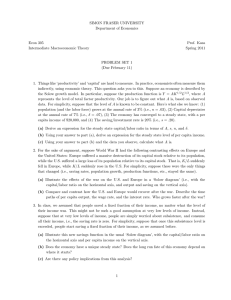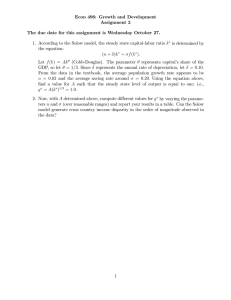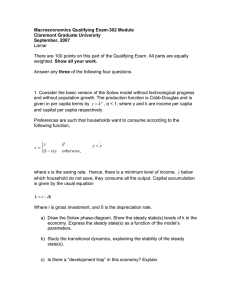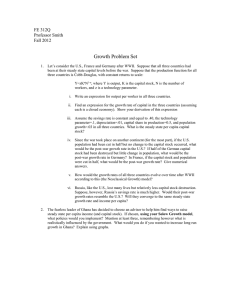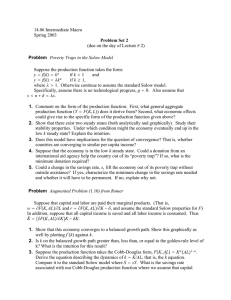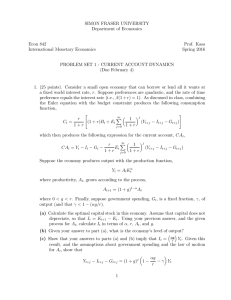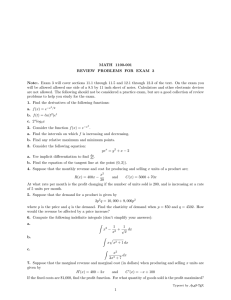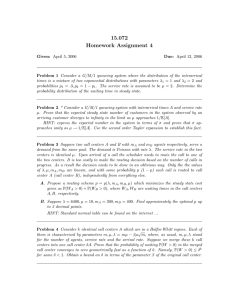SIMON FRASER UNIVERSITY Department of Economics Econ 305 Prof. Kasa
advertisement
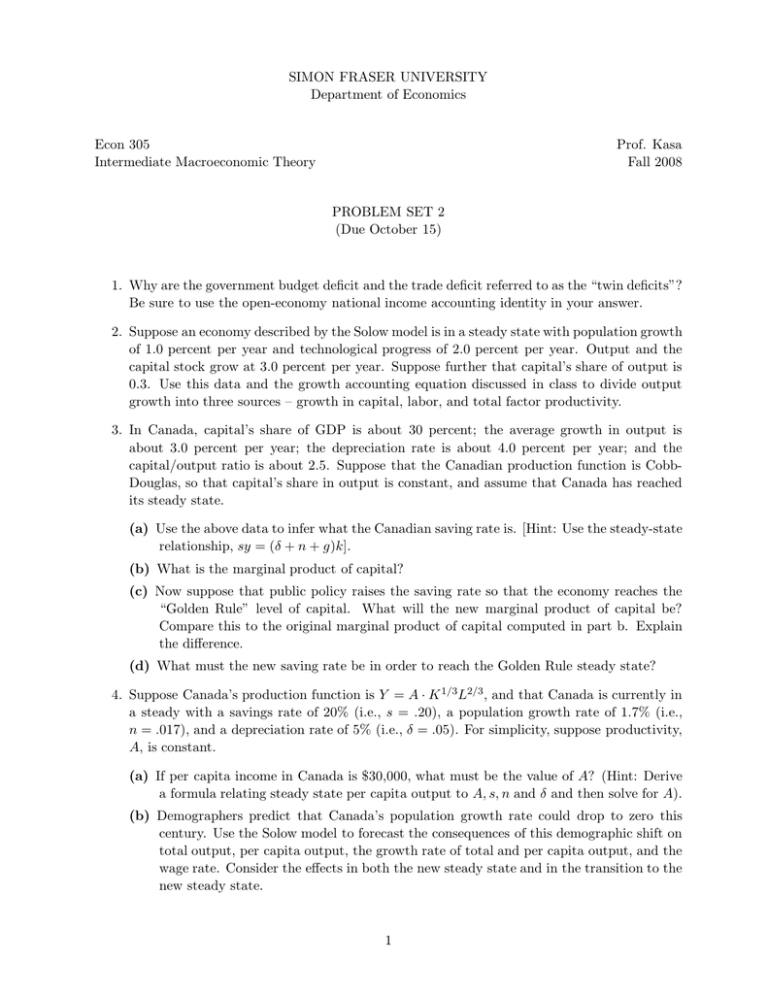
SIMON FRASER UNIVERSITY Department of Economics Econ 305 Intermediate Macroeconomic Theory Prof. Kasa Fall 2008 PROBLEM SET 2 (Due October 15) 1. Why are the government budget deficit and the trade deficit referred to as the “twin deficits”? Be sure to use the open-economy national income accounting identity in your answer. 2. Suppose an economy described by the Solow model is in a steady state with population growth of 1.0 percent per year and technological progress of 2.0 percent per year. Output and the capital stock grow at 3.0 percent per year. Suppose further that capital’s share of output is 0.3. Use this data and the growth accounting equation discussed in class to divide output growth into three sources – growth in capital, labor, and total factor productivity. 3. In Canada, capital’s share of GDP is about 30 percent; the average growth in output is about 3.0 percent per year; the depreciation rate is about 4.0 percent per year; and the capital/output ratio is about 2.5. Suppose that the Canadian production function is CobbDouglas, so that capital’s share in output is constant, and assume that Canada has reached its steady state. (a) Use the above data to infer what the Canadian saving rate is. [Hint: Use the steady-state relationship, sy = (δ + n + g)k]. (b) What is the marginal product of capital? (c) Now suppose that public policy raises the saving rate so that the economy reaches the “Golden Rule” level of capital. What will the new marginal product of capital be? Compare this to the original marginal product of capital computed in part b. Explain the difference. (d) What must the new saving rate be in order to reach the Golden Rule steady state? 4. Suppose Canada’s production function is Y = A · K 1/3L2/3, and that Canada is currently in a steady with a savings rate of 20% (i.e., s = .20), a population growth rate of 1.7% (i.e., n = .017), and a depreciation rate of 5% (i.e., δ = .05). For simplicity, suppose productivity, A, is constant. (a) If per capita income in Canada is $30,000, what must be the value of A? (Hint: Derive a formula relating steady state per capita output to A, s, n and δ and then solve for A). (b) Demographers predict that Canada’s population growth rate could drop to zero this century. Use the Solow model to forecast the consequences of this demographic shift on total output, per capita output, the growth rate of total and per capita output, and the wage rate. Consider the effects in both the new steady state and in the transition to the new steady state. 1
